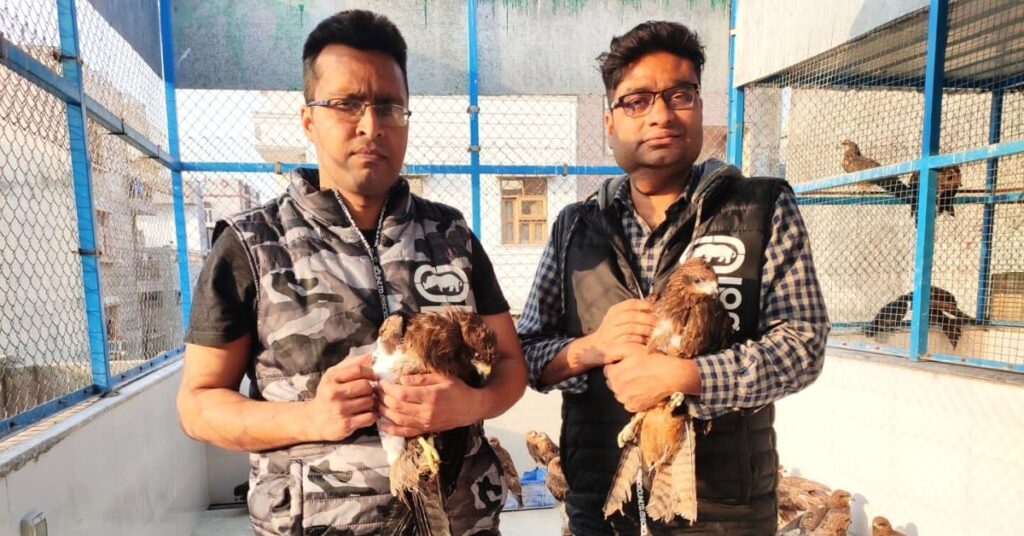In the narrow lanes of Old Delhi, brothers Nadeem Shehzad and Mohammad Saud have spent more than two decades performing a task few would dare to attempt: rescuing thousands of birds — mostly black kites — from life-threatening injuries caused by kite-flying strings.
Their work began in the late 1990s, when a wounded kite fell at their feet in Chawri Bazaar. Lacking any veterinary care for birds of prey, they taught themselves to treat the injuries. What started as an improvised effort on their rooftop has grown into Wildlife Rescue, a small but determined non-profit rehabilitation centre.
The injuries they treat most often are caused by manjha — razor-sharp synthetic kite strings coated with glass or metal. Banned in Delhi since 2017, manjha continues to be sold illegally, especially during the run-up to Independence Day. At peak season, the brothers say they rescue and treat up to 500 birds in a single day; on average, about 10 birds arrive daily.
Working with limited resources, they have developed advanced techniques such as feather grafting — transplanting feathers from donor birds to restore flight — and rapid rehydration protocols. They learned many of these skills through training abroad, adapting them to local conditions.
Their story reached global audiences through the Oscar-winning documentary All That Breathes, which brought critical acclaim but little in the way of sustained funding. The brothers still rely heavily on income from a modest family soap-dispenser business and sporadic donations. They have no dedicated rescue vehicle, often transporting birds on motorbikes or in cardboard boxes.
Ecologists stress that their work carries an impact far beyond individual animal welfare. Raptors like black kites help clean the city’s air and streets by scavenging waste and carcasses. “When you save a bird of prey, you’re also protecting the health of the ecosystem,” one Delhi-based conservationist said.
As another kite-flying season approaches, the brothers face the familiar challenge of bracing for a surge in cases while battling chronic shortages of funds, staff, and equipment. Yet, their mission remains unchanged: to give every injured bird a chance to return to the skies.


